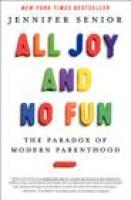All December-long, Estella’s Revenge, Girlxoxo, and Traveling with T are sharing their fave bookish (and sometimes non-bookish) experiences from the past year, and everyone’s invited to join the party! There are daily posting/link-up topics, but since I won’t be posting every day, I’ll be picking and choosing and combining them. In a nod to Andi’s motto, let’s call it free-range blogging.
Topics for Week 1:
1 – Faves Month Introduction –link-up hosted atGirlxoxo
2 – 5 Faves by a Theme – link-up hosted at Estella’s Revenge.
3 – 10 Fave Book Covers – link-up hosted at Traveling with T
4 – 6 Degrees of Separation {with a fave book} –linking up withAnnabel Smith
5 – Picking Favorites – a list you loved from someone else this week – link-up hosted at Girlxoxo
5 Faves by a Theme
2014 has been an excellent year for my reading of controversial, thought-provoking nonfiction. Five highlights, listed in the order in which they appeared on the blog:
It’s Wright’s revelations regarding Scientology’s “prison of belief” that made news when the book was originally published, particularly those concerning the “billion-year contracts” signed by members of its clergy, the Sea Org (often at very young ages), and the extreme, sometimes abusive conditions under which those members work. Many of his primary sources were once high-ranking executives within the Sea Org or other Scientology divisions. In some cases, their departures were more like escapes, and much of the information they’ve given the author was closely guarded by–and within–the church. Most of this material is made public for the first time in Going Clear…and much of it is may still remain unknown by current, committed church members, who will likely be directed to ignore or denounce the book (if they have access to it at all).
— Going Clear: Scientology, Hollywood, and the Prison of Belief by Lawrence Wright
 Jennifer Senior’s provocatively-titled New York magazine article from July 2010, “All Joy and No Fun: Why Parents Hate Parenting” contained much of what makes up the introduction to her 2014 book, which reframes the proposition of “all joy and no fun” with the more encompassing, less incendiary subtitle “The Paradox of Modern Parenthood.” The shift is subtle but significant, reflecting a focus on the state of having children rather than the actions of raising them. Senior’s goal is to examine, through research and personal stories, how the various stages of raising children profoundly affect the lives of parents.
Jennifer Senior’s provocatively-titled New York magazine article from July 2010, “All Joy and No Fun: Why Parents Hate Parenting” contained much of what makes up the introduction to her 2014 book, which reframes the proposition of “all joy and no fun” with the more encompassing, less incendiary subtitle “The Paradox of Modern Parenthood.” The shift is subtle but significant, reflecting a focus on the state of having children rather than the actions of raising them. Senior’s goal is to examine, through research and personal stories, how the various stages of raising children profoundly affect the lives of parents.— All Joy and No Fun: The Paradox of Modern Parenthood by Jennifer Senior
In Against Football, Almond is examining the ethical quandaries that football has created for him as a fan. Is it right that an activity that has been proven to cause long-term, irreversible physical and mental damage is promoted to boys and young men as a viable career path? How do “student athletes” and athletic scholarships support the educational mission of universities? Why does reverence for football players’ skills seem to give them a pass for antisocial–sometimes even criminal–behavior off the field?
The Teacher Wars confirms and documents some misgivings many of us may already have about public education. As it stands now, politics seem to play a much larger role than effective educational theories and proven instructional practices in determining what is taught and how teaching is done. The inconsistencies of teacher-training methodologies are discussed, as are the pitfalls of “accountability measures” in which student test scores reflect perceived teacher “effectiveness” more than any actual knowledge gained by their pupils. However, Goldstein balances her reporting on what’s not working with examples of strategies that are, and maintains her journalistic objectivity until the book’s epilogue, where she makes recommendations based on the latter.
Biss’ questions and motherly worries provide the framework for On Immunity, but the heart of the book is an enlightening and thoroughly approachable discussion of epidemics, disease prevention, and “public health” in concept, policy, and practice. Biss often refers to literary metaphors of disease–Dracula is frequently cited in narrative context–and the human body as representative of the “social body” is a recurring metaphor throughout the book.
10 9 Fave Book Covers
Since so much of my reading this year was galleys, audiobooks, and ebooks, I honestly haven’t been all that attentive to covers. Although my best reading this year has been nonfiction, the fiction has been better-loooking.
I don’t usually start my “year in review” this early, but I guess it’d not too soon to start thinking about it–have you started yet?








